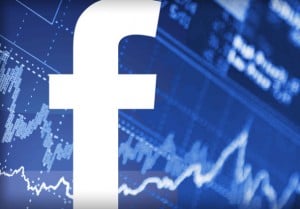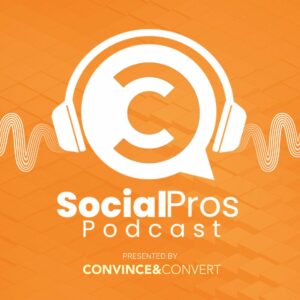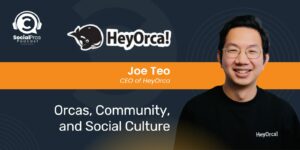Hosted By
About Social Pros Podcast:
Social Pros is one of the longest-running marketing podcasts in existence (10 YEARS and counting), and was recently recognized as the #1 Audio/Podcast Series by the Content Marketing Awards.
Our purpose? Making sure that we speak to real people doing real work in social media.
Listeners get inside stories and behind-the-scenes secrets about how teams at companies like Google, Reddit, Glossier, Zillow, Lyft, Marvel, and dozens more, staff, operate, and measure their social media programs. With 600+ episodes, the Social Pros Podcast brings the humanity of social media to the forefront, while providing incredibly useful marketing strategies that listeners can immediately implement.
Follow Social Pros on LinkedIn.
To inquire about becoming a guest or show sponsor, please email our Executive Producer, Leanna Pham, at leanna@convinceandconvert.com.
Apple Podcast Reviews:
The Social Pros podcast has quickly become a favorite in my feed! I'm consistently impressed by the engaging conversations, insightful content, and actionable ideas. I truly learn something every time I listen!
@Arlie KThis is absolutely an awesome listen for anyone in communications or social media!!
@Will31CThis podcast has become one of my staple weekly podcasts for learning about marketing! Love the conversations that they have and it's always enjoyable and educational!
@Simonstone95Love the podcast - informative, in depth and spot on for any business size.
@MissTriathlon
This is Episode 17 of the Social Pros Podcast : Real People Doing Real Work in Social Media. This episode features Maria Ogneva of Yammer. Read on for insights from Maria, and our Social Media Stat of the Week (this week: are Facebook and Twitter like the Tortoise and the Hare?).
 This is Episode 17 of the Social Pros Podcast : Real People Doing Real Work in Social Media. This episode features Maria Ogneva of Yammer. Read on for insights from Maria, and our Social Media Stat of the Week (this week: are Facebook and Twitter like the Tortoise and the Hare?).
This is Episode 17 of the Social Pros Podcast : Real People Doing Real Work in Social Media. This episode features Maria Ogneva of Yammer. Read on for insights from Maria, and our Social Media Stat of the Week (this week: are Facebook and Twitter like the Tortoise and the Hare?).
Listen Now
Click the play button to listen here:
[podcast]http://socialpros.podbean.com/mf/web/qtjd5x/SocialProsEpisode17.mp3[/podcast]
Download the audio file:
http://socialpros.podbean.com/mf/web/qtjd5x/SocialProsEpisode17.mp3
The RSS feed is: http://feeds.feedburner.com/socialprospodcast
Find us on iTunes: http://itunes.apple.com/us/podcast/convince-convert-blog-social/id499844469
Please Support Our Sponsors
Huge thanks to data-driven social media management software company Argyle Social for their presenting sponsorship, as well as Infusionsoft, Janrain, and Jim Kukral at DigitalBookLaunch. We use Argyle Social for our social engagement; we use Infusionsoft for our email; Janrain is our crackerjack social integration company, and Jim is our guest host for the podcast (and a smart guy).
Social Pros Transcript For Your Reading Enjoyment, Thanks to Speechpad for the Transcription
![]()
Eric Boggs: Hello, hello, ladies and gentlemen. Welcome to Social Pros number 17. My name is Eric Boggs, I’m your host today. I’m joined by Jim Kukral of Digital Book Launch. How are you today, Jim?
Jim Kukral: I’m doing great. How are you today, Eric?

Eric: I’m just fine. Our fearless leader Jay Baer is who knows where today. Probably putting together his daughter’s bicycle, drinking tequila, God knows what. We will carry on without him.
Jim: Maybe he’s drinking tequila while he’s putting together the bicycle.
Eric: Maybe he’s drinking tequila while riding his daughter’s bicycle.
Jim: I want to see that video.
Eric: He put a photo on Facebook this weekend, very proud that he had assembled his daughter’s bike. It was very funny.
Before we get rolling, I will thank our sponsors, which includes my company, Argyle Social, developers of social media management software used by all of today’s brightest social marketing stars, including our guest today, Maria Ogneva from Yammer.
Also, thank Infusionsoft, developers of social email marketing automation software. Janrain, a recently added sponsor, that develops social sign-on stuff and functionality. Last but not least, Jim, of Digital Book Launch.
The news of last week and I suppose the news of this week and probably many forthcoming weeks is the Facebook IPO. Did you buy, Jim?
Jim: You know, I’m not a stock guy. I’m not a numbers guy. I’m not one of those financial guys. The dollars and sense of the whole thing just doesn’t make sense to me.
Eric: Fair enough.
Jim: I never bought a stock before in my life, but I do watch from the sidelines and see what’s going on. It was a huge story, you’re right.
 Eric: Yes. I bought this morning, I got it at $33.09 or something like that. I avoided the offer day hoopla and bought today when I figured all the underwriters would stop kickstanding the share price.
Eric: Yes. I bought this morning, I got it at $33.09 or something like that. I avoided the offer day hoopla and bought today when I figured all the underwriters would stop kickstanding the share price.
We’ll see how it shakes out over the next few weeks. It’s obviously an exciting development for Facebook, Facebook investors and employees, but also for Social Pros far and wide who really owe a debt of gratitude, I’d venture to say, to Facebook. I mean, our entire business is really built around these platforms. It’s very cool to see such a huge, huge financial transaction take place.
Jim: That leads me to believe… what you said right there though is that are people buying the stock because they’re fans, or are they buying it because they’re a good business decision? When the Green Bay Packers sold shares of their football team, which they don’t allow NFL teams to do anymore, people bought it because they’re fans.
I’m a marketer. I deal a lot with the human brain, psychology, why people buy, why people click, why people choose. Why did people buy this stock? I would bet that most of casual people who bought very small amounts of shares just bought it because they’re fans.
Eric: It’s very funny that you bring up the Green Bay Packers’ stock offering, because I am a desperate Green Bay Packers fan, as is my father. When I saw that they were offering shares in the team I got super-duper excited until I read the fine print and saw that it actually wasn’t shares of the team. It really was something for the fans. It was non-voting, non-financial value, non-transferable.
But I think you’re right. I’m willing to bet that a lot of consumer investors bought because it’s Facebook and it’s the biggest, brightest thing of all time and they spend an hour of their day logged into the site.
I’ll tell you why I bought, and to me I ignored the financial fundamentals of a company that’s still this early stage, as Facebook. When Amazon.com IPO’d, they did nothing but sell books. They do an awful lot more today and they’re a bajillion dollar company. When Google IPO’d, there were a lot of skeptics around the long term revenue model there, as well.
Facebook has built something so, so big. I think the money is only just starting to roll in. I’m a buy and hold type, I like to buy really early and let it ride, so we’ll see.
Jim: Where’s the money, man? What money are they making? I’m reading a Wall Street Journal blog here that says Facebook generates only $4.12 in revenue per user, compared with $29.32 for Google. They haven’t proven that they can make money like Amazon and Google.
Eric: Yes. I guess the argument, from the way I see it, is that they still have an awful lot of time to prove and to learn other ways to make money.
Yeah, we’ll see. Don’t get me wrong, Google is the greatest revenue generating concept in history. Basically harvesting purchase intent on search pages. Facebook doesn’t have intent, it’s more of an intent-generation site, so the advertising play there is a lot different. I just have a pretty strong inkling that they’re going to figure stuff out over the next rest of the life of the company.
Jim: I agree, but they’re going to have to make some changes.
Eric: Yes.
Jim: One of those, I think they’re going to have to put search inside, so you’ll never have to leave Facebook. If you could just search for stuff inside Facebook, you’d never have to leave.
Eric: People probably never would leave if they could, and maybe that’s what they do.
Eric’s Social Media Stat of the Week: Are Facebook and Twitter Like the Tortoise and the Hare?
I want to change the tack of the Facebook conversation just a little bit. There was a great article on the New York Times, we’ll link it up on the blog post. It’s on the ‘Bits Blog’ which is a really well done technology blog on the New York Times. It’s by this writer named Nick Bilton who wrote a post essentially comparing Twitter and Facebook to the story of the tortoise and the hare.
 If you don’t know the story of the tortoise and the hare, Google it or look for it in Facebook search I guess, or ask somebody on Facebook. He basically made the parallel that Facebook is like the hare. It grew the fastest, it grew really quickly, maybe it was a little bit reckless in its growth, and I think that’s probably a fair statement to make.
If you don’t know the story of the tortoise and the hare, Google it or look for it in Facebook search I guess, or ask somebody on Facebook. He basically made the parallel that Facebook is like the hare. It grew the fastest, it grew really quickly, maybe it was a little bit reckless in its growth, and I think that’s probably a fair statement to make.
Twitter is more like the tortoise that’s slow and steady. The example he pointed out was the recent announcement that Twitter made that they’re going to be using their tweet buttons to track their users and determine content relevance. Now they send a daily or weekly email with recommended content. The signaling behind that comes in part from their tweet buttons that are scattered all throughout the Internet.
When they announced that, they provided a way for people to opt out at the very beginning, which is absolutely not something Facebook has ever done. When you think about the long term future of both of these networks, Jim, how important do you think trust will be?
Jim: For the regular user? I don’t think it’s really a big deal. I think for the vast majority, 98% of the people who use these networks who aren’t social pros, they don’t care. It’s the same thing with affiliate marketing. I do a lot of affiliate marketing, and people are always like, ‘Well, what if people find out that you’re giving them affiliate links?’
I said, ‘I’ve told people that before. They don’t care.’ As long as they get what they want, which is helpful, problem solving, high quality, relevant information or entertainment, fast, as long as they get what they want, people don’t care.
Until something game-changing happens, like somebody very big or important loses their privacy data or something, even then it won’t really matter. It’s too big of a machine to stop at this point I think.
Eric: Yes. I think we’ve had almost this exact conversation a few episodes ago, where we talked a little bit about the balance of privacy and value. As long as the value keeps coming in return, I think people just happily hand over privacy.
Jim: Yes, they’re going to continue to do that.
Eric: Yes. We’ll link up this blog post about Facebook versus Twitter and privacy and the long play here. It’s a fascinating read.
Special Guest: Maria Ogneva, Yammer
Let’s bring in our super special guest, Maria Ogneva, the head of community at Yammer.com. Hi, Maria.

Maria Ogneva: Hi, Eric. How are you?
Eric: I’m doing just fine. Thanks for joining us on the show.
Maria: Thank you for having me.
Eric: Tell our listeners a little bit about Yammer, first. Obviously a shining star in San Francisco, and then tell us a little bit about your role there.
Maria: Absolutely. For those of you who are not as familiar with Yammer, it’s an enterprise social network that brings together people that work in your company; content, conversations, business data, all together into a single location. All of our business data is across so many systems that it’s really rather difficult to extract anything of value across these silos.
 We’re there to bridge the gap and help companies become more agile, exchange information faster, innovate faster, and really transform their organizations. Because they’re talking, they’re sharing, and they have an unprecedented amount of access to the information that they’ve created at their own company. We have 5 million users and growing quickly. We’re in about 85% of the Fortune 500 currently.
We’re there to bridge the gap and help companies become more agile, exchange information faster, innovate faster, and really transform their organizations. Because they’re talking, they’re sharing, and they have an unprecedented amount of access to the information that they’ve created at their own company. We have 5 million users and growing quickly. We’re in about 85% of the Fortune 500 currently.
Eric: Very cool. You have the very meta task of doing social media for effectively a social media company in a lot of senses.
Maria: That’s correct. Yes, I do social media for a very social company. Social is part of our DNA, it’s not a bolt on, right? We’re this platform, we’re this social layer, that allows a company to become more social.
It’s really in our blood. It’s how we operate as a business. It’s the types of people that we hire, who live and breathe this stuff. Also I manage our communities of customers who in turn are also community managers for their networks. It’s extremely meta, and I’m really, really, really grateful to be a part of it.
Jim: Now, we were just talking about people not caring. I bet you your clients care. You’re talking about corporations and small businesses and people who are sharing internal data through your system, correct? I think they care about the privacy issue, right?
Maria: Oh, absolutely. They’re large corporations, they care very much. We’re very insistent on really keeping our security and privacy to the highest of standards that our customers feel comfortable with. It’s not just a place to talk about work, it’s a place to actually do work. We’re definitely making that a huge part of our strategy in everything we do.
Eric: Maria, you have interesting perspective in the sense that you manage both internal social networks and also external social networks. I think that’s a problem that a lot of community managers have that they don’t really think about. They have their customer audiences that they want to engage, but then they have their internal colleagues and stakeholders and vendors that they also want to engage socially online. What are the similarities between internal and external? How are they different?
Maria: Great question. As far as similarities, they’re both communities, they’re communities of people. Oftentimes you may have similar challenges in getting a network up to speed, or in a very mature and active network, to make sure that the right people are getting the right information and that you’re able to provide a great cross-section for everyone to see for the serendipity to take place where people are meeting each other from different backgrounds.
At the same time, you do have to put conversations in containers where people who are interested in those particular conversations can access them. You’re solving the signal-to-noise issue. In both types of communities, those are things that you have to think through.
How they’re different? Extremely different. The internal employee community, it’s people you work with, right? There’s an incredible amount of thinking and doing that you have to do around the culture and process to make sure that this effort is actually successful.
If you don’t have a culture of sharing, it’s going to be very, very difficult to be successful within enterprise social networking. You deal with different types of issues as far as how to get your organization into it, how to galvanize the “C suite”. The politics are a little different.
The smart organizations are getting it, they are understanding that employees want to be heard. The paradigm of Facebook that you guys were just talking about and other social networks are really leaving customers, consumers, who are also employees, wanting for that kind of interaction at their job.
It’s going to move from a nice to have, to an absolute business imperative to provide these types of conversations and platforms for these types of conversations to happen inside of an organization. Otherwise, employers are facing brain drain and potential really bad morale. In this very crazed, fast-paced economic climate, businesses can’t afford to lose their best and brightest.
Eric: I was just thinking about how when I got my first real job, there were people that were a generation older than me that weren’t very facile with their computers or technology.
I’m wondering if the next iteration of that is going to be the generation of people behind us that grew up around socializing online. They come to work and they go to work for these organizations that are Luddites when it comes to connecting with people and building community through online social technology.
Maria: Absolutely. It’s actually really interesting, and I have a front seat in the house to actually be able to observe and learn from how organizations are handling situations like that. Some of our customers have actually created reverse mentorship relationships, where the mentor is actually the young, digital native.
These are the phrases that they have coined themselves. Deloitte Australia for example, calls them “digital natives”. Those are the people who come into the workforce, “Gen Y”, they know Facebook, they grew up with these technologies. To them, to not use them is ridiculous. They partner them up with “digital dinosaurs”, again their term, not mine, and they make sure that they have the right training and get comfortable using the tools.
Here’s another thing. You could be great at using Twitter and Facebook in your personal life, but you still have to figure out how it aligns with your business objectives, because you’re not going to go on Yammer and talk about LOLcats and pictures of your dog.
Although you can have a social group where you post those types of things, but you have to understand, as an organization what you want from this initiative, what are some of the best practices, and come together so you can achieve your business objectives. That’s a different mind shift and a different “training” that everyone should go through.
Eric: Very cool. I want to change gears a little bit. You guys made an announcement last week about a deal you did with Badgeville, a company that provides a gamification layer, a gamification software, that’s now integrated with Yammer. Can you talk a little bit about what that means, and how that plays into using social to drive employee performance and business performance?
Maria: Absolutely. Badgeville is actually just one of the integrations that we’ve done in this sphere of your internal performance and praise field.
We’ve partnered with companies like Ultimate Software that actually is able to capture praise and hook it up to your HR profile. When it comes time to review the employee, you can see who’s praised this employee, how far reaching the expertise of this person is. Are people praising this person all over the organization, or is it just the person reporting to them praising them all the time?
With gamification and ability to uncover and point to expertise, but in a fun way, in a gamified way, it’s really important because it helps employees uncover who is good at what, and it gives people that extra reason to contribute if they’re getting something out of it.
Jim: I’m really surprised that that whole badge stuff really didn’t take off as much. I really thought that a year ago or two years ago, it was going to be something that was really huge.
I’m glad to see that it’s still going on, because just think about the psychology of why people do all this stuff. People want to feel satisfied, and I thought the badges really… let me put it to you this way. I don’t think anyone ever implemented it the right way to make it as successful as it could be, so I’m hoping to see that continue.
Maria: I actually agree with you. I think “gamification” is a hot buzz word, but as far as its practical application in the enterprise, it’s been lacking. You’re not tying the badges and the behaviors to business results, and that’s where it becomes really, really impactful, is where you are able to collect the praises and the badges for something that matters to the business.
It’s a great way to align the “what’s in it for me” conversation, because everyone wants something. The employee has something in it for them, the manager has something, the organization itself. The degree to which all of that aligns and meshes together and marches to the one goal, that’s what makes you successful.
Eric: This piece around employee enablement and business performance really gets to the core of what Jay and I set out to do when we started this podcast, which was highlight that social media is an aspect of doing business. The stuff you’re talking about, Maria, is strategic and it’s important. It’s an executive level conversation.
It’s not, “How many clicks did I get on Twitter today?” it’s not, “How many posts did I do on Facebook last week.” This is using social as a fundamental way to drive business performance. I think that is very, very cool.
Maria: Absolutely. I agree, I think last time, if you’ve been able to do this please let me know. Paying rent in Twitter followers hasn’t happened yet, or I haven’t been able to do it. The sooner that we start embracing social as not just the silo but as something that lives inside of everything we do, inside of our organizations, the sooner we’ll be successful.
I can’t wait until social stops being a word, “social business,” “social enterprise,” and it’s just business. Because that’s really what it is. Your business hasn’t really changed in that you’re still there to give your customers a kickass experience so that they go and tell other customers.
You make your employees into your brand advocates too in the process by treating them well, by making sure they’re well cared for, that they know why they’re doing this, giving them purpose, giving them the right opportunities to advance their career and learn.
If you tie that all together, that’s really business, right? You’re there to sell, to make a profit. Just the ways that we’re getting there are a little different. It’s time to start integrating all of that and making sure that you are solving the need that’s in the market and you’re using social to help you scale and really become more effective.
If you have internal problems as an organization, social is just going to put a magnifying class over that.
Eric: Yes, it’s just going to amplify it. Make it worse immediately.
Maria: Absolutely. Fix your organization first, make sure you have the right culture, make sure your processes are set up for success, and then social will help you become a super star and beat all your competitors, which is what you want to do in the first place.
Jim: I know for a fact that Jason Falls gets free gasoline because he has a high Klout score.
Eric: [laughs]
Jim: That’s how it works for Jason.
Maria: For the rest of us, [laughter] it doesn’t work that way.
Eric: That’s awesome, Maria. That is exactly the sentiment behind our podcast, and it’s very cool to hear you express it so well. Before we wrap up, can you give us a couple social pros shoutouts? People that you read, books that you read, blogs that you like?
Maria: Sure. How much time do we have? There’s so many.
Eric: Just give us three.
Social Pros Shoutout
Maria: Give you three, okay. There’s so many amazing bloggers out there. I tend to stay on the more enterprise, organization, culture theme of things. I really enjoy the work of John Hagel. If you haven’t had a chance to check him out, follow him on Twitter, @Jhagel. From there you can link to his blogs and books.
There’s a book that he wrote recently with his co-author, John Seely Brown, about The Power of Pull. It’s talking about that business transformation that’s afoot right now, where organizations can no longer plan what’s happening. They can’t issue accurate customer forecasts and thus ramp up and say, “Okay, we need this many employees and we’re going to show this many ads and this many people are going to buy our product.”
Things are a lot less defined and a lot more fluid now, so organizations have to set themselves up to attract the right resources at the right time, so that they can actually compete. It’s your ability to pull towards you, the ecosystem; partners, employees, customers, everything. That’s going be what makes you successful.
His work is pretty amazing. He talks about passion and how important passion is in this kind of enterprise, because it’s passion that allows you to connect deeply, to really drive something forward in a market where things are getting so commoditized so much. Huge recommendations for John Hagel.
I do love my enterprise folks, like Constellation Research Group with Ray Wang at the helm. They have really great analysts who write on topics from marketing to HR and how technology is affecting organization.
Folks from Altimeter Group are really amazing. Charlene Li, Open Leadership, talking about exactly that. How do you become a more social organization culturally, and how do you help your leadership get it? She’s really, really important to this space.
I think that’s more than three at this point.
Eric: That’s enough. Those are some good folks. We’ll link up all of those in the blog post at socialpros.com.
I think we’re done. I’ll thank our sponsors one last time, starting with Jim. Jim, thanks for stepping in in Jay’s absence. Good to chat as always.
Jim: I love doing it. Any time.
Eric: Also Janrain; developers of lots of very cool social sign-in technology. Infusionsoft; email marketing automation for small business, and my company, Argyle Social, developers of a lovely social media marketing dashboard.
On behalf of Jim and Maria and Jay, thanks a lot for tuning in. Next week, episode number 18, is Ike Piggot from Alabama Power. Should be a good one. Thanks everybody.







